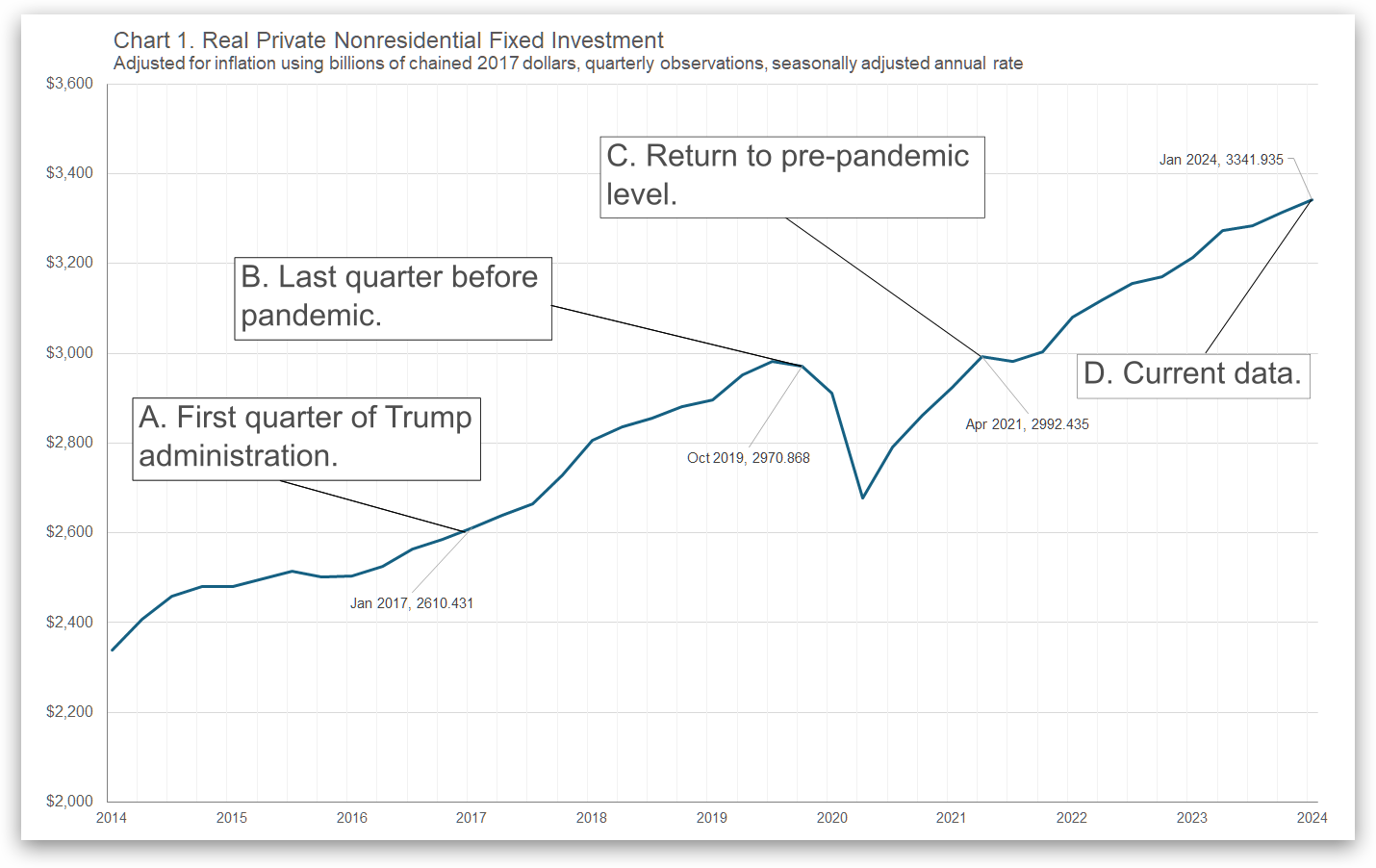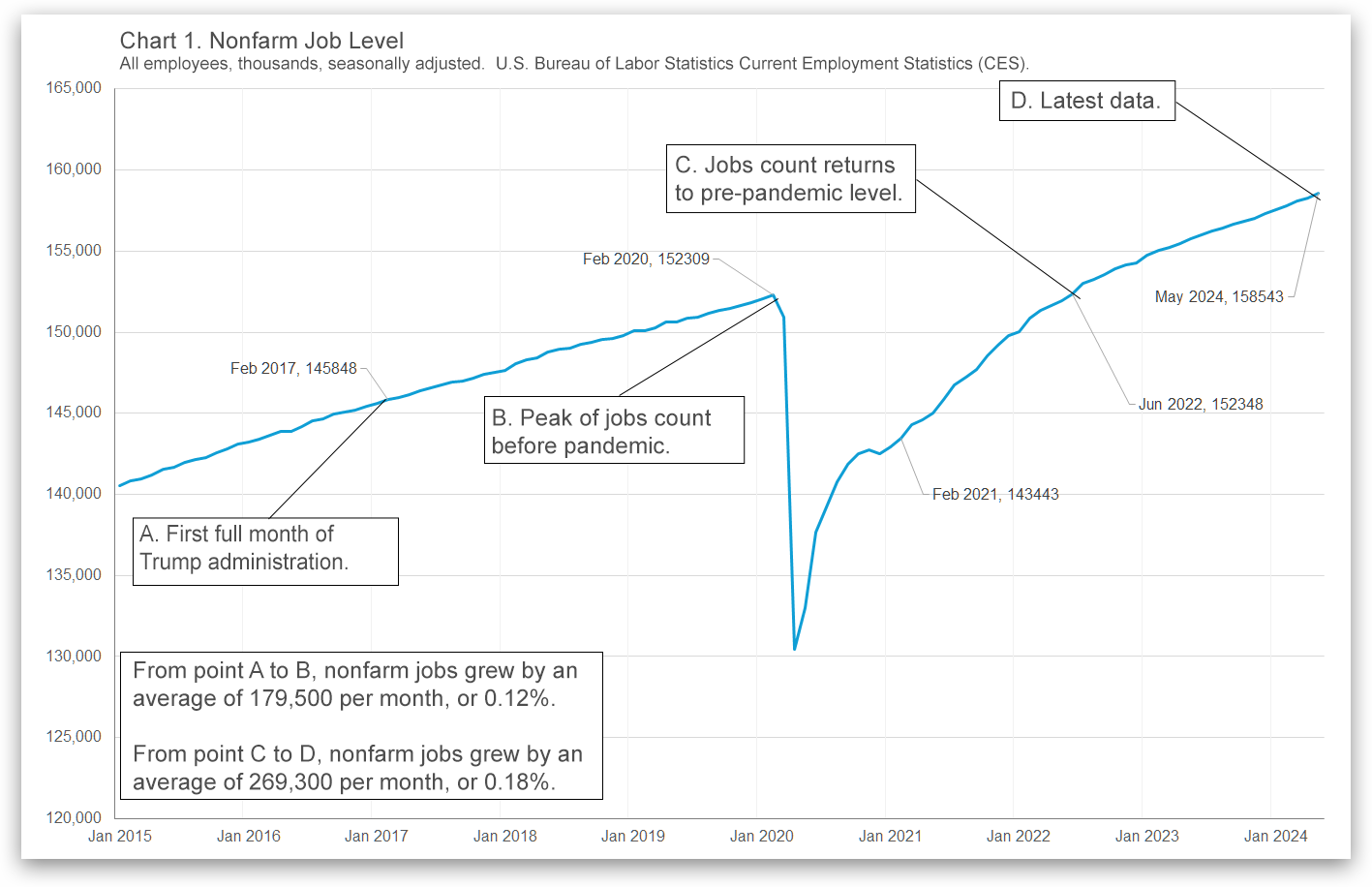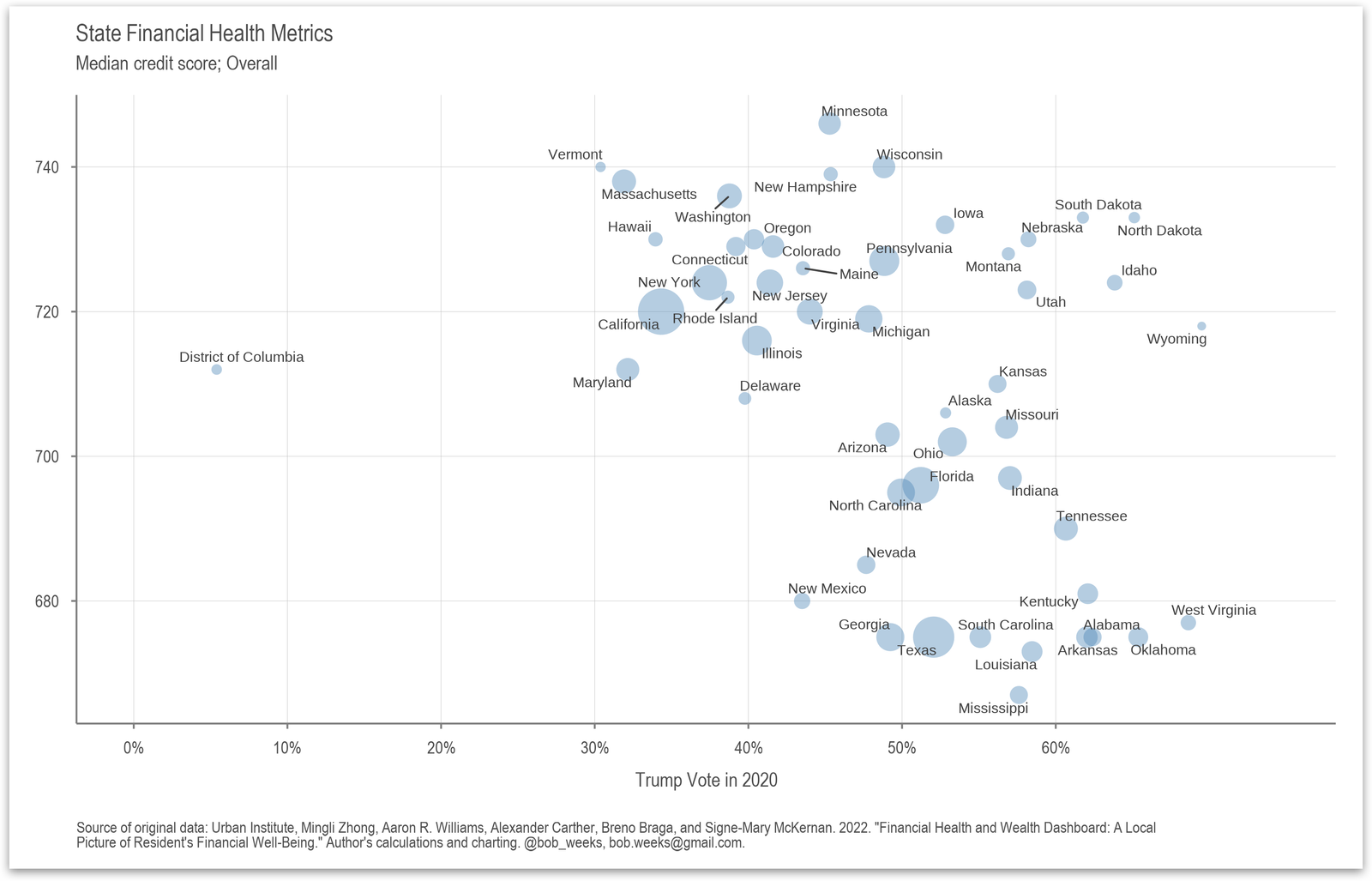Tag: Donald J. Trump
-

Real Disposable Personal Income, pre- and post-Covid
Comparing real disposable personal income before and after the Covid pandemic, attempting to remove the effect of the pandemic.
-

Gross Domestic Product, pre- and post-pandemic
Looking at recent economic performance as measured by Gross Domestic Product.
-

Median Usual Weekly Real Earnings, pre- and post-Covid
Comparing weekly earnings before and after the Covid pandemic, attempting to remove the effect of the pandemic.
-

Hourly Earnings, pre- and post-Covid
Comparing hourly earnings before and after the Covid pandemic, attempting to remove the effect of the pandemic.
-

Employment, pre- and post-Covid
Comparing job growth before and after the Covid pandemic, attempting to remove the effect of the pandemic.
-

Real Private Nonresidential Fixed Investment
Comparing business investment before and after the pandemic.
-

Biggest Producer of Crude oil #FACT #PERIOD
A popular meme on social media is true, but doesn’t convey its intended message.
-

Employment, pre- and post-Covid
Comparing job growth before and after the Covid pandemic, attempting to remove the effect of the pandemic.
-

State Financial Health Metrics: Credit Score
This chart shows the relationship between the median credit scores of residents in each U.S. state and the percentage of votes that Donald Trump received in the 2020 election.